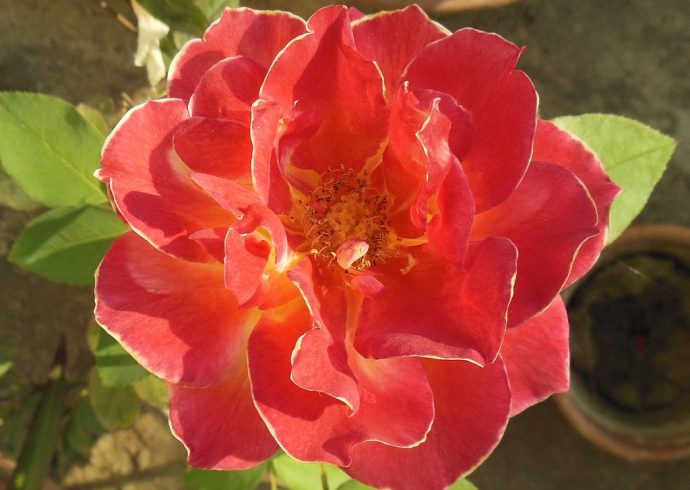
Growing Candy Cane Oxalis flowers
During the Christmas holiday season, some people deck out their front yards with decorations in the form of candy canes, usually made from plastic. During the springtime, however, delicately swirling red and white trumpet-shaped flowers 1 ¼ inches in size that closely resemble candy canes can be grown in place. When the flowers open fully, however, the petals are white with yellow in the center of the flower, while the red stripes remain on the underside of the petals.
A member of the Oxalidaceae family, the Candy Cane Oxalis perennial is native to South Africa. As a dwarf shrub, Candy Cane Oxalis is also referred to as Candy Cane Sorrel plant due to its lemony taste. The flowers are beautiful alone but are also edible, as is the rest of the plant. This means that the leaves and flowers can be used in salads, hors d’oeuvres, cake and cookie decorations. The leaves can also be used to flavor soups and stews.
The Candy Cane Oxalis is a hardy plant for growing in planting outdoors in zones 7-9. While these flowers can be planted in zones 3-6, they should be brought indoors during the winter season if possible. Due to the plant’s native status, they can also be grown indoors in pots to endure its survival over the seasons, much like African violets.
Prior to planting Candy Cane Oxalis, select an area of your garden that receives full sunlight or partial shade. The plants will grow well in a variety of soils: sandy, clay, loam. Make sure the soil is well-drained prior to planting, after the last frost. Plant each rhizome 2 inches deep in the soil and between 2 inches to 3 inches apart. Water them once they are in the ground. Each Candy Cane Oxalis plant will grow to 6 inches in height. The flowers will bloom during spring into early summer. Once the plants are established, they do not require additional watering when the flowers are in bloom. Deadhead the flowers to encourage more blooms.
During the growth season, from late summer to early fall, Candy Cane Oxalis can be propagated through its seeds, or by dividing the plants. This is also the time to apply a light fertilizer to the plants if needed; once a year is enough for the application.
While the plant and its flowers are edible, if you have pets you will want to keep them from eating them, as Candy Cane Oxalis is toxic to dogs, cats and horses.
Image Credit: Candy Cane Oxalis, by Gilder Kate via Flickr.


